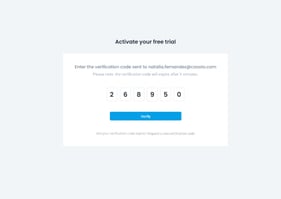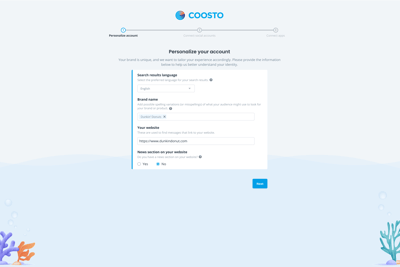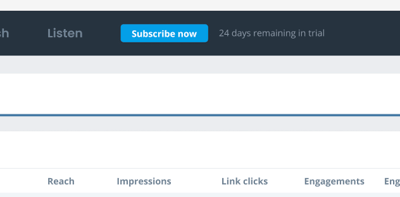Signup & subscription system
UX DESIGN, PRODUCT STRATEGY, RESEARCH, UI
Led the research and design strategy to transform the company's business model from a service-led sales model to a product-led sales approach
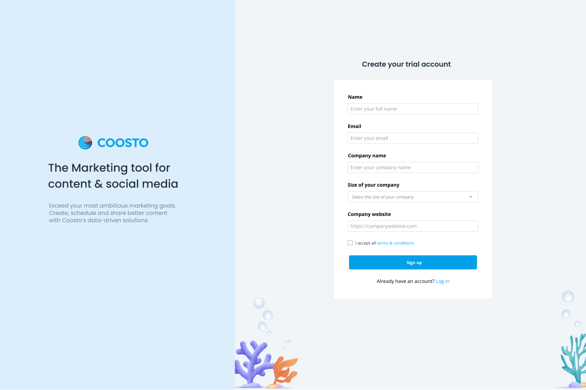

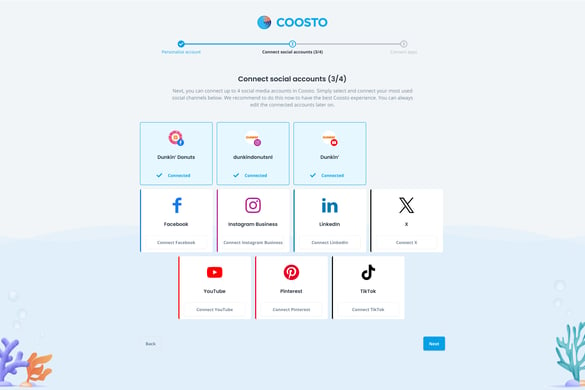

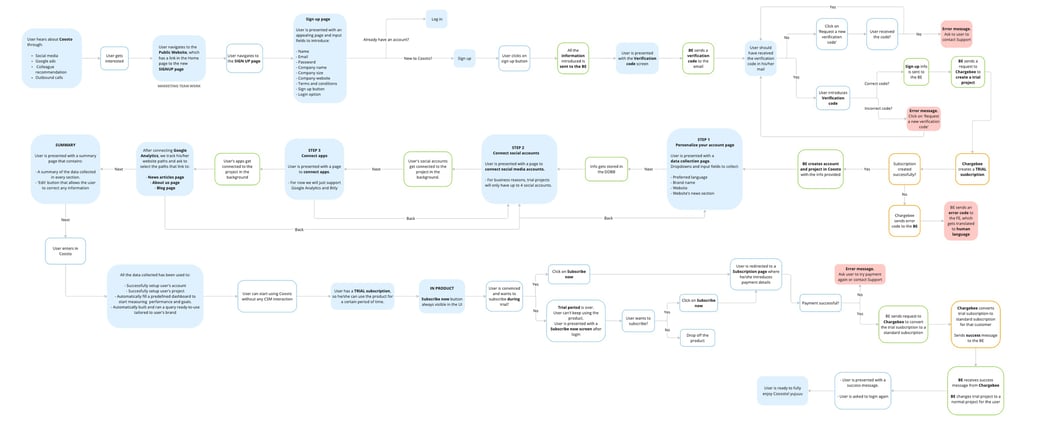

Key achievements
🚀 Transition to Product-Led Sales
Shifted from a service-led to a product-led approach, reducing dependency on human-driven sales and onboarding.
🌎 Expanded Global Reach
Enabled independent product access, increasing international signups from 2% to 7% in six months.
📊 Automated User Onboarding
Implemented an automated signup system, reducing onboarding time from 9 days to 22 minutes.
🔄 Trial-Based Subscription Model
Introduced a free trial system, leading to a 38% conversion rate from trial users to paying customers.
💡 Optimized CSM Workload
Reduced CSM involvement in onboarding by 40%, allowing them to focus on high-value clients.
🤝 Inclusive culture
Encouraged colleagues from different teams to contribute their ideas, increasing the impact of our work.
The challenge
Coosto’s sales and onboarding process was entirely human-driven, resulting in high costs, inefficiencies, and user frustrations:
Service-led sales model: Customers interacted with Account Executives (AEs) to schedule demos, and were required to make a purchase decision without being able to try the platform themselves.
CSM dependency: After purchasing, users depended heavily on Customer Success Managers (CSMs) for tasks such as project setup, dashboard creation, and query building, leading to delays and operational bottlenecks.
Recognizing these challenges, which made the business model costly and limited scalability, the Management team established as the primary goal for the year: increase revenue and reduce costs.
To achieve this, the UX team proposed to explore the idea of transitioning Coosto’s sales model from a service-led to a product-led, enabling users to self-serve, reducing reliance on CSMs, and ultimately increasing revenue while cutting cost.
Given the project’s strategic importance, the team decided to prioritize it for the year. Due to organizational priorities and my experience in addressing user-centered challenges, the team assigned me to take the lead as the UX designer in charge of the project. My role was to define the strategy, guide the research, and collaborate with developers and stakeholders to deliver actionable solutions that empowered users and aligned with the company goals.
Research
To understand the root causes of inefficiencies and user frustrations, I led a comprehensive research phase that included:
Interview and workshop with CSMs:
I held interviews with CSMs and organized a collaborative workshop to create a customer journey map from their perspective. This allowed me to uncover critical moments where users felt frustrated and revealed that their greatest reliance on CSMs stemmed from these core workflows:
Setting up projects: Users lacked the functionality and permissions to setup their own accounts and projects, causing delays, as they needed to wait for CSMs to initiate and configure the platform for them.
Measuring their performance: Dashboards required manual configuration by CSMs to visualize performance metrics. This added more workload to CSMs and left users feeling unable to take full control of their own data.
Creating queries: Queries were overly complex and required good knowledge of a query language, requiring CSM guidance to analyze brand positioning.
A critical finding was that these three areas shared a significant amount of overlapping information. For instance, data configured during the setup phase was directly tied to the metrics displayed in the dashboards and the queries crafted for analysis. This presented an opportunity to automate processes by reusing already collected inputs.
User interviews: Interviews with high-MRR clients highlighted lack of independence during the signup process and the aim to have their setup done quickly and effortlessly. It was also mentioned frustration with onboarding delays and the inability to try the product independently before subscribing.
Data analysis: Reviewing platform usage metrics (with Mixpanel and Redash) and Support tickets confirmed that delays in onboarding, and dashboards and query building were the main bottlenecks.
Competitive benchmarking: Research into competitors revealed that other platforms had already transitioned to a subscription model with trial periods, which allowed users to set up their accounts independently. This demonstrated that automating workflows and introducing self-service capabilities were not only achievable, but also industry standard practices.
These findings reinforced the need to shift from a service-led to a product-led sales model by addressing CSM dependency in these three key areas, enabling self-service onboarding, and introducing a trial period to empower users.


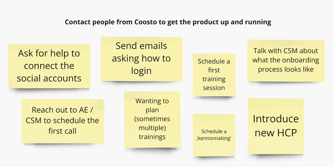


















CUSTOMER JOURNEY MAP WITH CSMS
Ideation
The ideation process began with a brainstorm session with the tech lead of the development team, where we created a concept map to map out patterns between the three key areas: project setup, dashboard creation, and query building. The concept map allowed us to:
Visualize overlapping information and shared dependencies across these workflows.
Identify opportunities to reuse collected data (e.g. user inputs during signup) to automate processes.
Highlight areas where users could be empowered to complete tasks independently.
This exercise provided a clear roadmap for how the signup system could centralize and simplify these workflows.
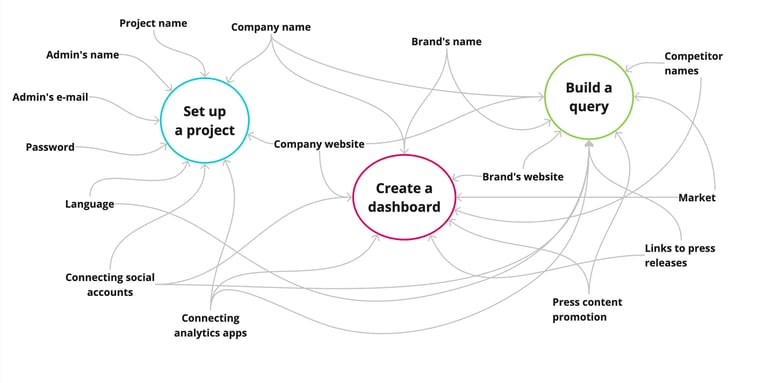

From there, the key solutions we ideated included:
Automating core workflows: Using data collected during signup, the platform automatically set up projects, configures dashboards, and generates queries, significantly reducing manual intervention.
Subscription-based signup system with a trial period: We designed a self-service signup process that allowed users to try the platform for free before subscribing. The signup flow was designed to collect all the necessary information to automate project setup, dashboards and query building.
Integration with Chargebee: To efficiently manage subscriptions and trials, we integrated with Chargebee. I ensured that the entire flow (from signup to onboarded customer) remained within Coosto’s platform, creating a seamless user experience.
Following this, I developed a detailed flow diagram to make clear all the steps of the flow. The ideation process emphasized collaboration across teams to ensure the solutions addressed user needs, technical feasibility and business goals.
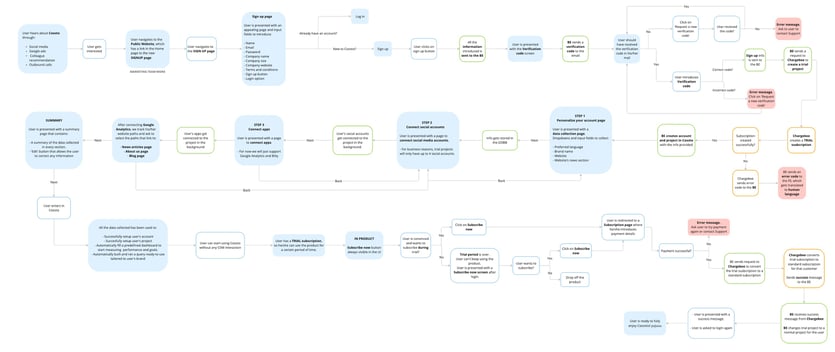

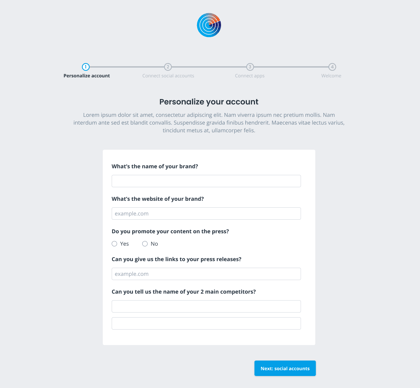

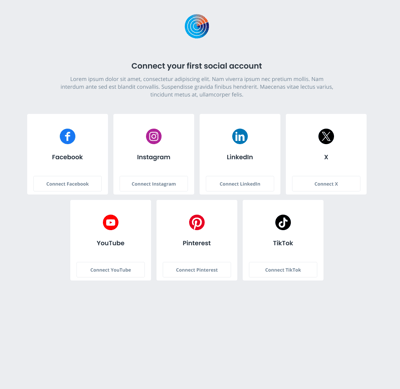

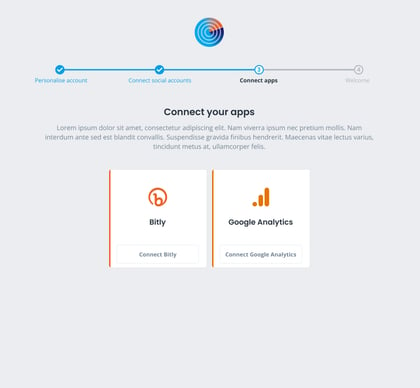

CONCEPT MAP
FLOW DIAGRAM
MID-FI DESIGNS
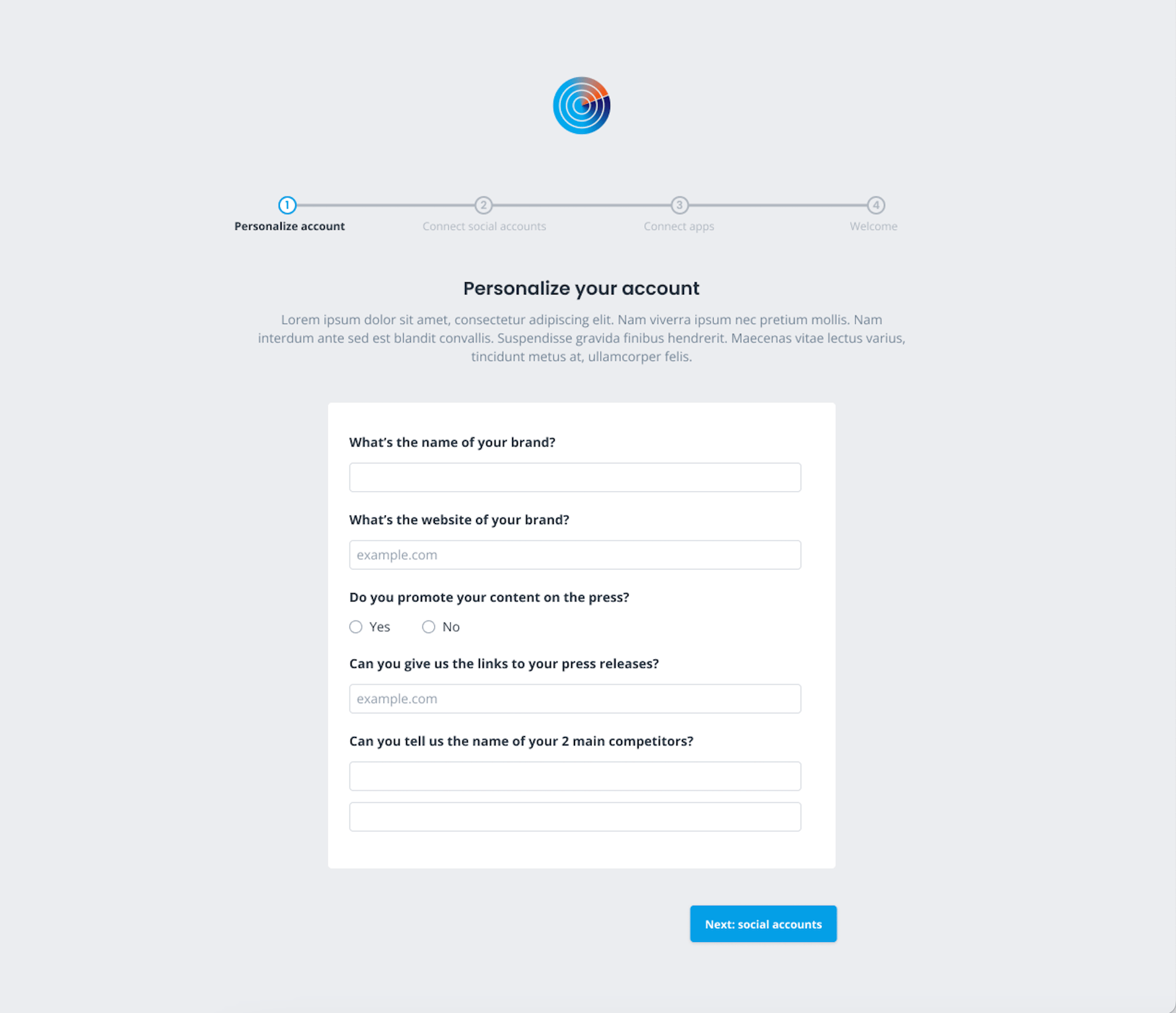
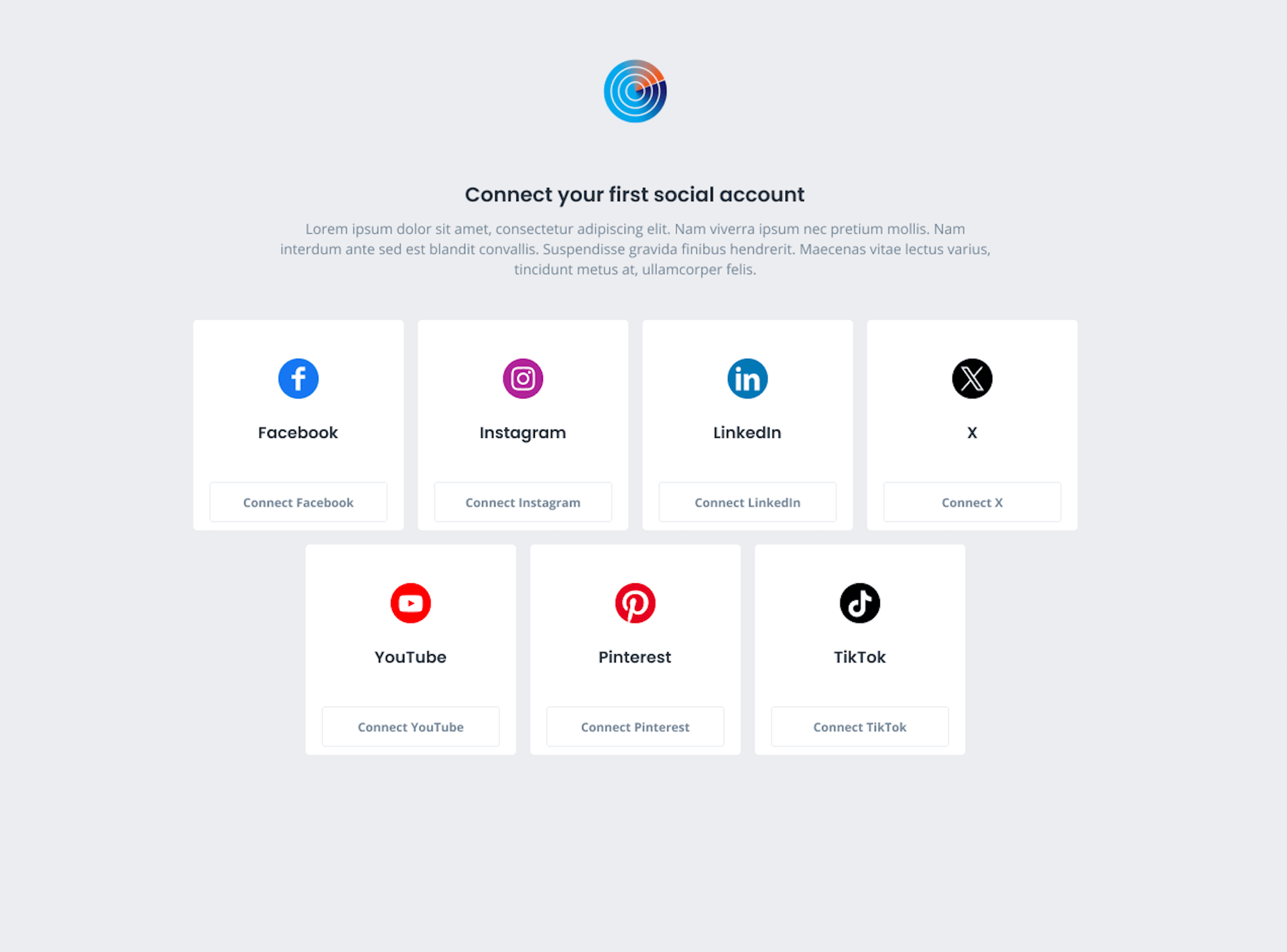
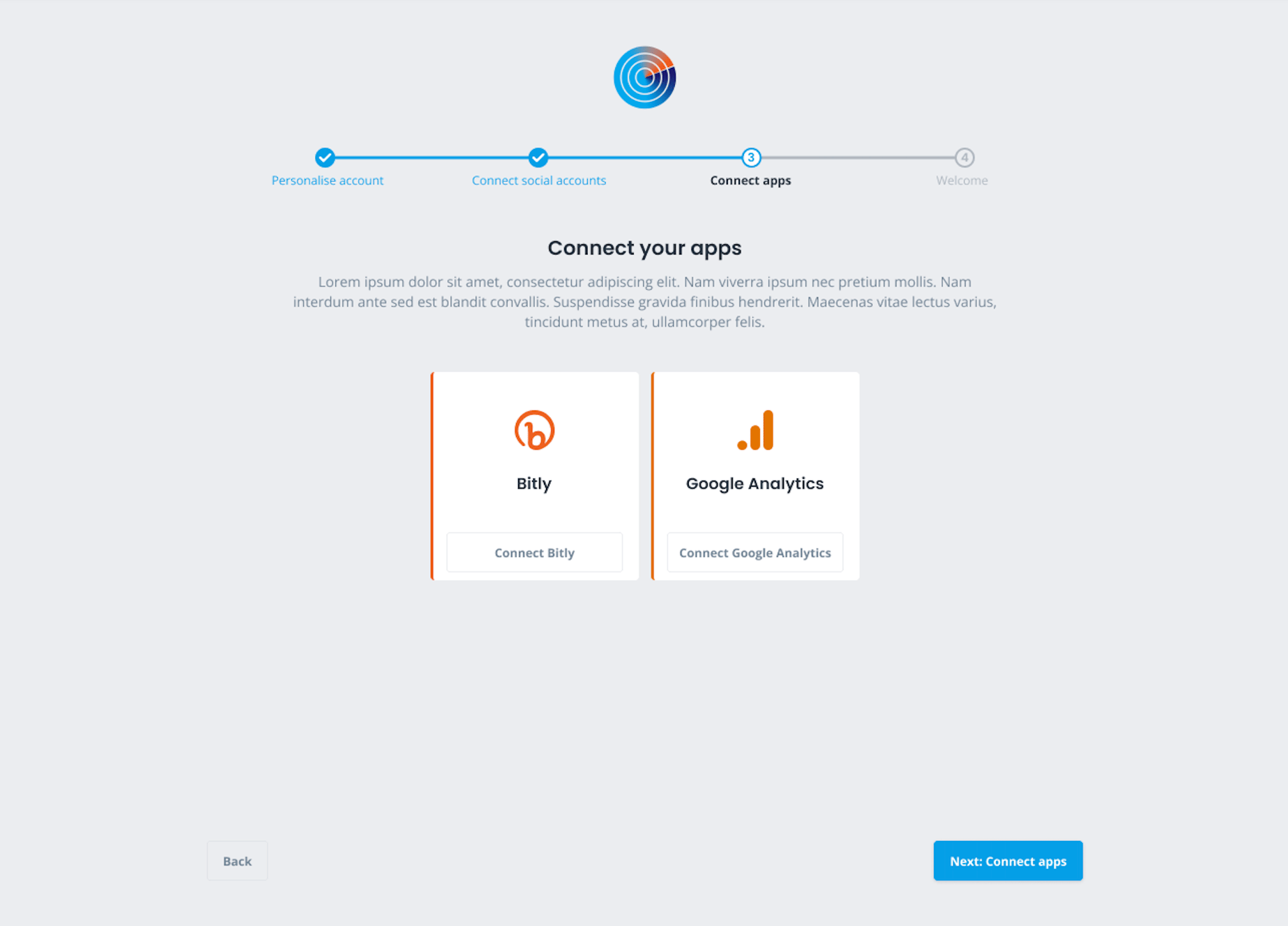
Validation
To ensure our proposed solutions met user needs and expectations, we decided to test the initial mockups with users, gathering their feedback and aligning with stakeholders to refine the designs.
Some findings:
Trial period validation: Users were enthusiastic about being able to try the platform independently before subscribing. Many expressed that this feature alleviated the pressure of deciding after a single demo or the need to schedule another one if they weren’t convinced.
Signup flow improvements: Users appreciated the streamlined signup process, but flagged some areas where inputs were unclear, leading to confusion. In response, we added descriptions and tooltips to improve clarity.
Security checks: During validation, the Security Manager emphasized the importance of verifying the account authenticity, so we implemented a security check that required users to enter a verification code sent to their email during the signup process.
Improve query quality: Initial testing revealed that the quality of the queries was not great, resulting in less relevant outcomes for users. To address this, we conducted multiple rounds of refining and testing the query-building logic and added/modified some inputs to ensure more meaningful and accurate results.
Summary page with flexibility to edit inputs: Users requested the ability to review their information during the process. To accommodate this, we added a Summary section that allowed users to review and update their information before finalizing the setup.
By the end of the validation, we had a well-refined system that confirmed to meet user expectations and addressed the challenges identified during research. Users expressed excitement about the new process, highlighting its clarity, ease of use, efficiency and independence.
Solution


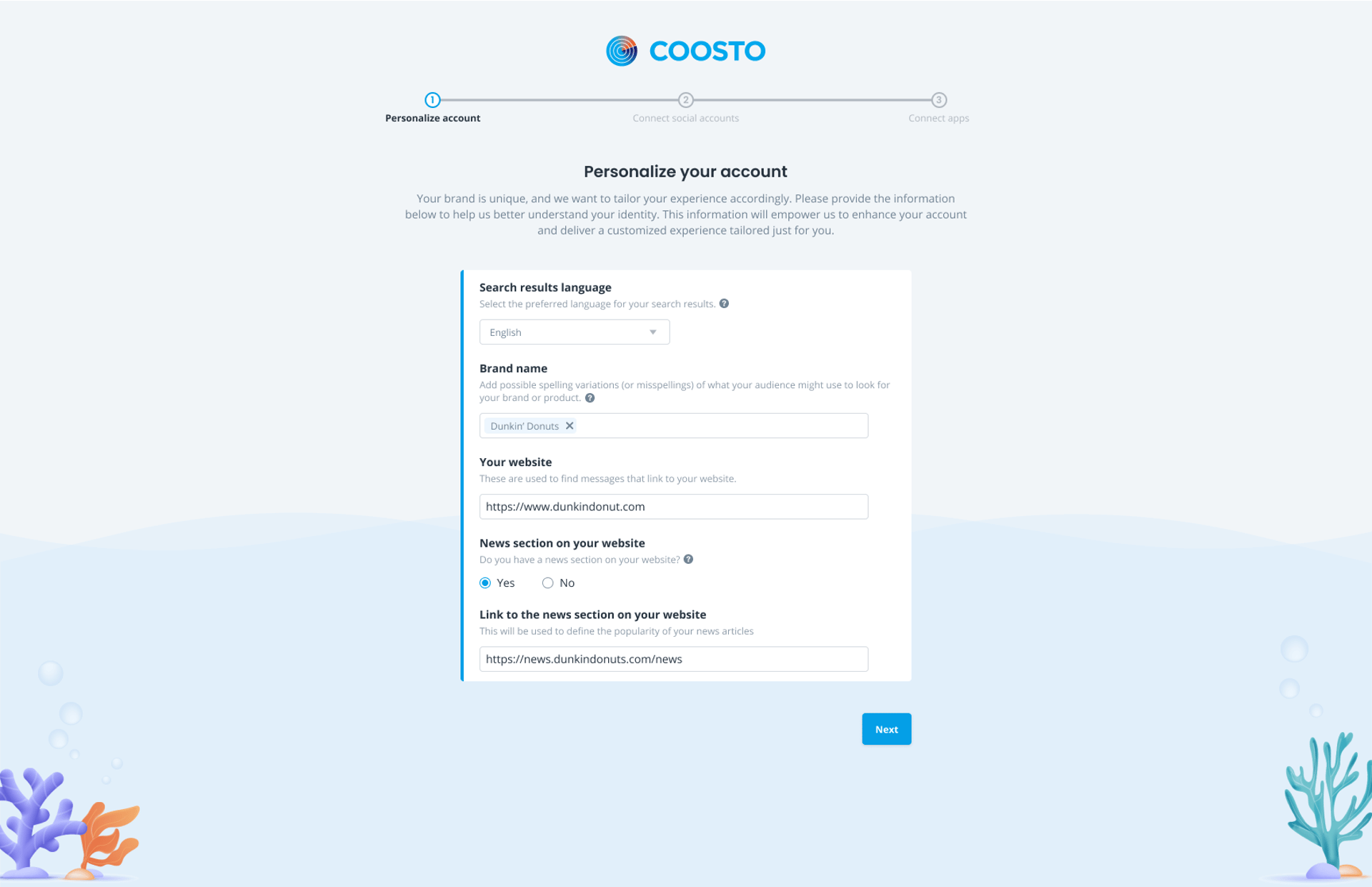
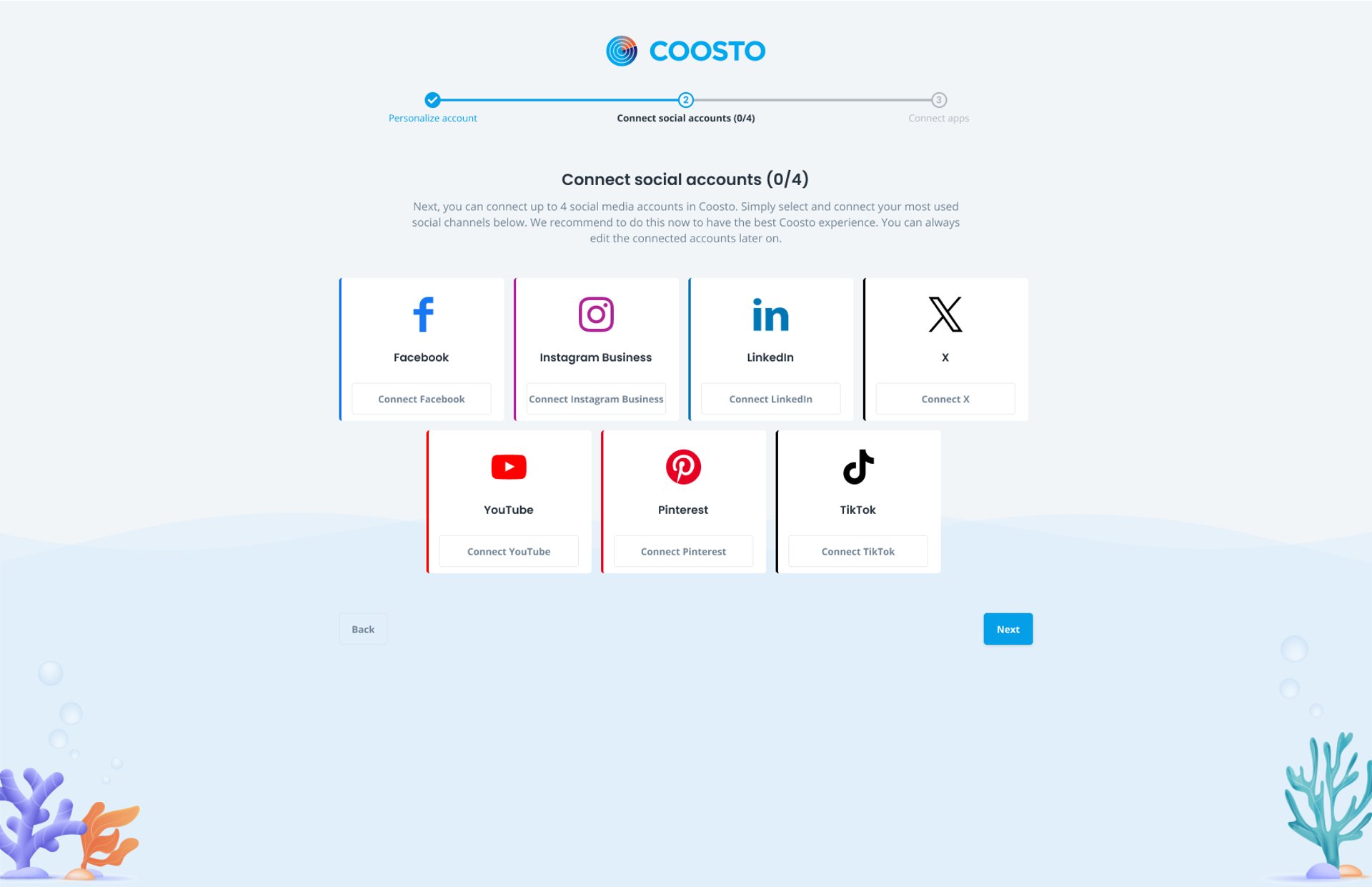

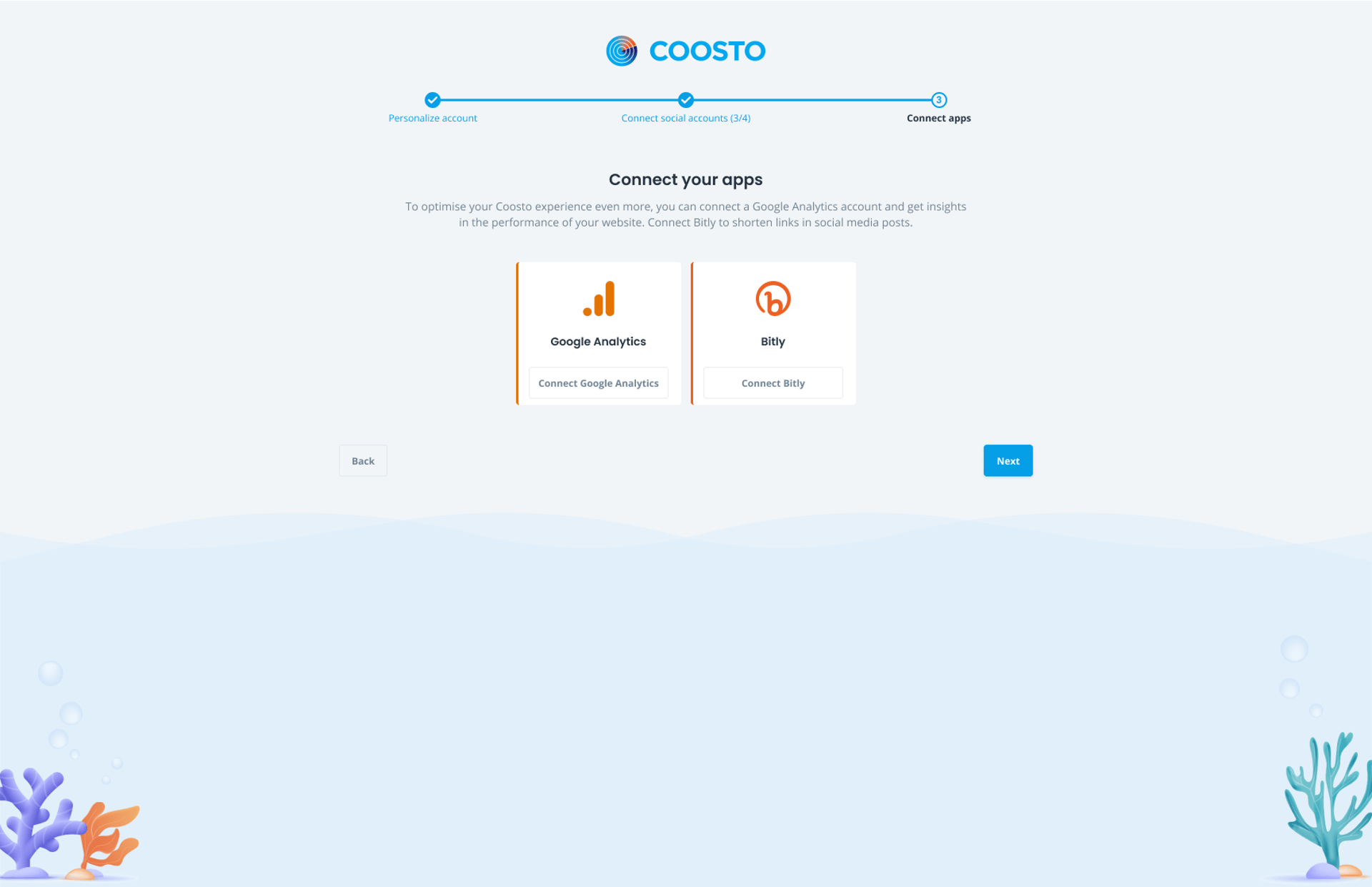
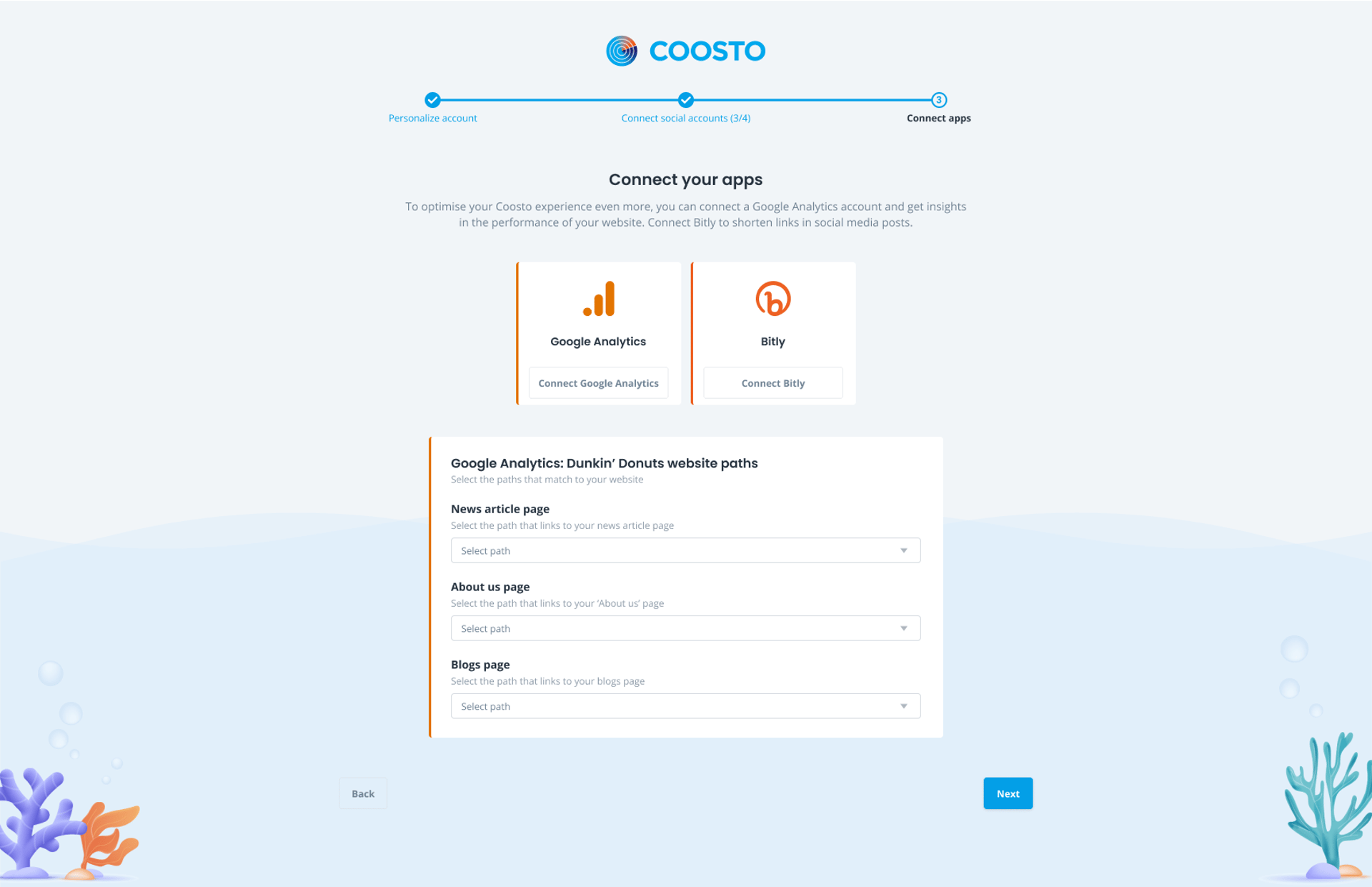
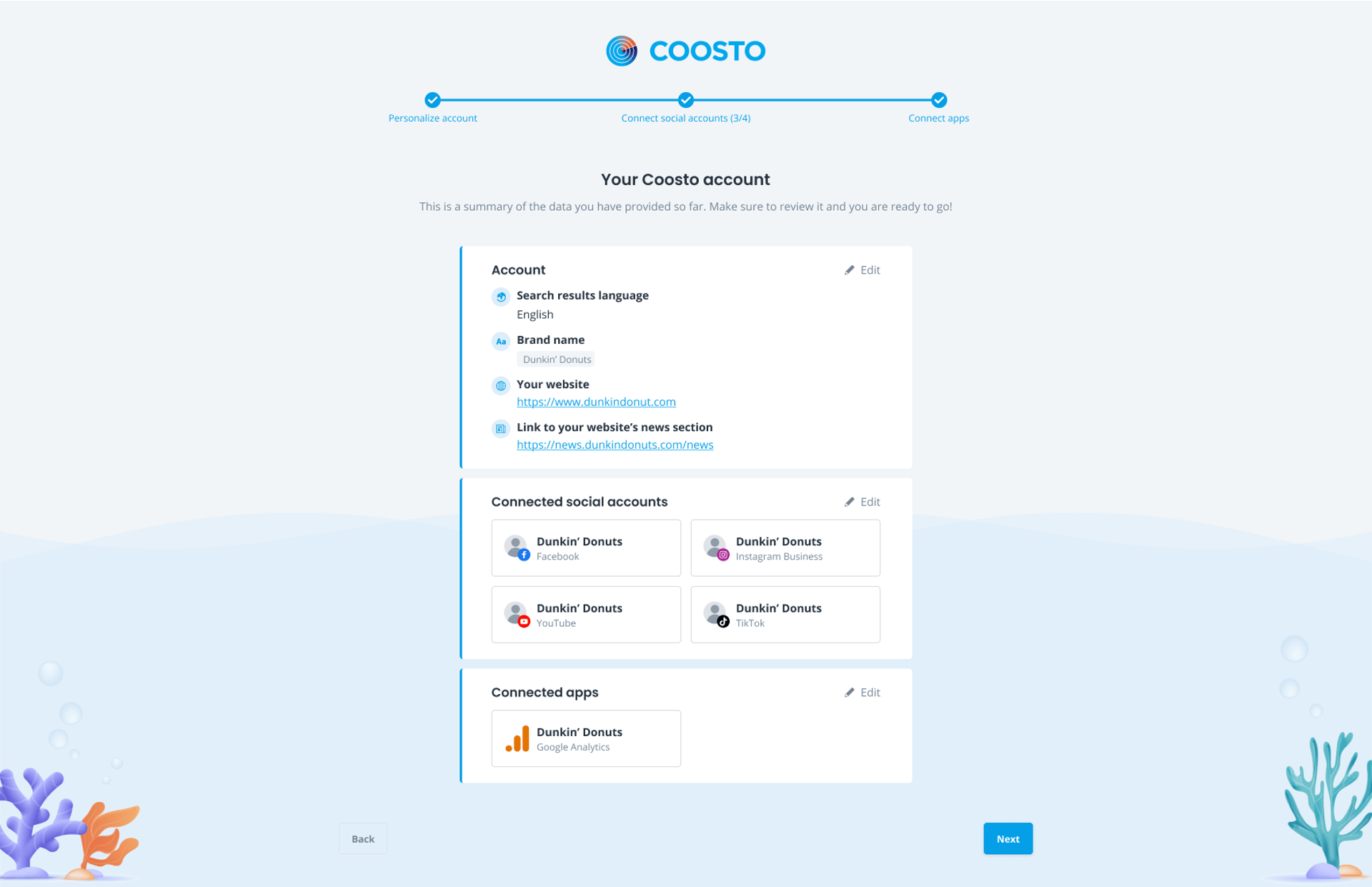

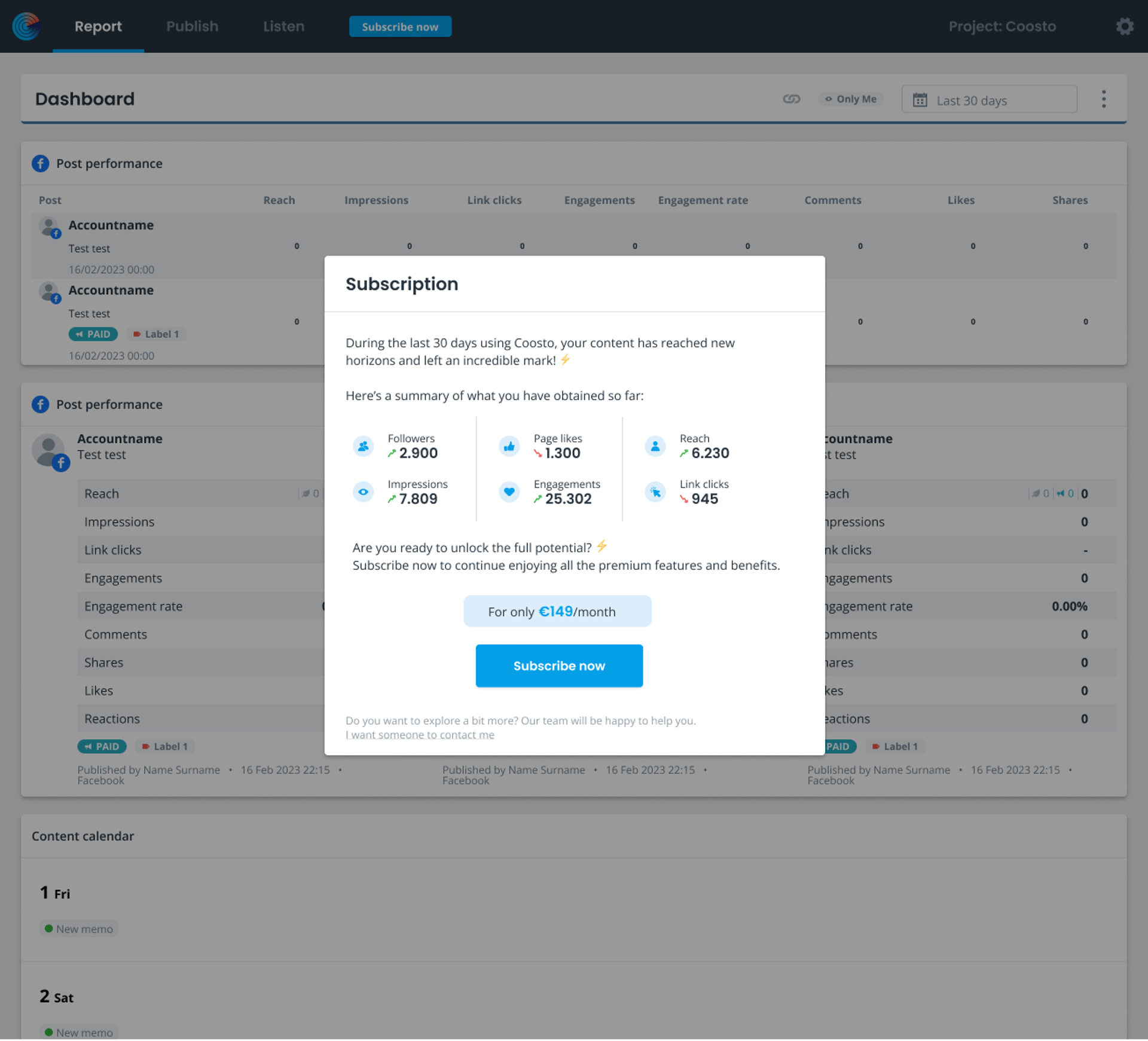
Measuring success
The success of this project was measured through several key metrics post-launch, demonstrating its impact on the business goal of increasing revenue and reducing costs, as well as improving the user experience.
How we measured the costs reduction:
Signup and onboarding times: thanks to the signup page and the automation of onboarding, the average time it takes from the moment a user gets interested in Coosto, until he/she is onboarded and becomes an active user on the platform decreased from 9 days to just 22 min.
Reduction in CSM workload: CSM workload related to onboarding dropped by 40%, giving them more time to focus on retaining larger clients.
How we measured the revenue increase:
Trial to subscription conversion rates: 38% of trial users converted to paying subscribers within the first three months, exceeding the initial target of 35%.
Increased international reach: the new strategy made it easier for users from different regions to discover, try and adopt the product independently. The percentage of customers outside the business operational area (The Netherlands, Belgium and Spain) grew from 2% to 7% of total new signups within the first six months post-launch, reflecting the scalability of the new approach.
While the project focused on automating workflows with a product-led sales strategy, it also aligned with Coosto’s broader business strategy:
The service-led approach was repositioned to focus on enterprise clients, which provided high-value revenue streams.
The product-led approach successfully attracted smaller and international clients, creating a scalable and cost-efficient way to grow the user base.
Wrap up
This experience represented a big challenge for me, but it was significantly rewarding. It demonstrated how investing in user-centric design, making data-driven decisions, and fostering collaboration across teams can transform not only user journeys, but also entire business strategies, creating lasting impact for both.
Let's talk!
Contact me at
nataliafernandezpena@gmail.com
© 2025. All rights reserved.
Or follow me on



